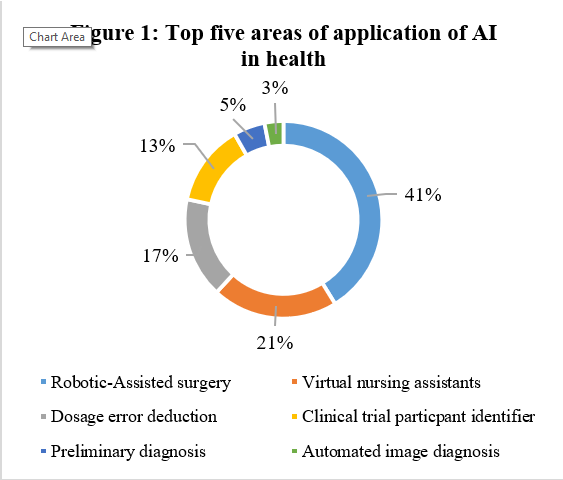Personalised early risk prediction, prevention and intervention based on Artificial Intelligence and Big Data technologies
I. Introduction
The increase in the ageing population in most countries accompanied by the rising burden of chronic condition and multi-morbidity has brought immense pressure in the health sector. The demand for prevention and integrated services has increased implying the system must adapt to the changes [1]. Health systems must put more effort into the prevention and adoption of a patient-centred approach as opposed to a disease-centred approach. The objective of the health system should be to overcome fragmentation in the services offered and strive to move towards coordination and integration of interventions along the field of care. Data science can develop models that are personalised in the prediction of the occurrence of an event to an individual in a given period [2]. The model can further be used to estimate the chances that a specific even occurs in a particular person over a predetermined period. Data science allows for the development and validation of comprehensive models based on AI, intervention and prevention of conditions using available data resources.
II. background
Heart disease and diabetes are the top two prevalent and costly chronic conditions impacting patients globally. The conditions result in industries spending billions of dollars every year in treatment and management of the conditions [3]. The evolution in disease treatment to preventive, proactive and more organized forms are looking forward to advancements in technology to assist with drawing actionable conclusions from the enamours data generated. The medical professionals in collaboration with data scientists are working on models of big data aimed at preventing disease through genetic mapping. Scientist gathers a vast amount of data in the field of genetics have the potential of making a difference in disease prevention. The presences of artificial intelligence (AI) in almost all sectors makes it possible to apply to disease prevention and treatment [3]. AI has been used to chart trends and draw connections across millions of data points. Without the data scientist, medical professionals would not make a meaningful conclusion out of the data. A key project was conducted by Boston organizations which used a machine-learning algorithm to better identify patients at risk of diabetes and heart diseases.

III. visualising results
The top five applications of AI in the health sector is presented in figure 1. The data was obtained from Accenture 2017 [4]. The values are for the prediction of the state of AI adoption in health care in 2026.
According to the projections AI will account for approximately three per cent of the automated image diagnosis by 2026. This will result in improvements in CT scans and other image based diagnosis. The chances of errors will reduce significantly with the adoption of AI in image diagnosis. From figure 1, virtual nursing assistance will become a reality in the health care sector with approximately 21 per cent of the nurses being virtual assistance guided by AI [5]. This will reduces cases of patients mishandling and improve the overall performance of the health sector. However, surgery being a precision science, the use of robots will be of huge benefit. The industry is expected to adopt robots in assisting surgeons. Robots unlike humans are less likely to make mistakes if they are well designed to perform a specific task. Some surgeries require precise measurement of tissues which is a challenge to humans. This kind of surgery can be possible if robots are used to assist in the operations. With all these developments expected by 2026, AI is becoming a key solution to challenges in the medical sector [6].
IV. discussions and conclusion
Discussions
The analysis of the future of AI in the health sector shows that the sector is on the right path to incorporating the technology. AI is proving to be valuable and a majority of health institutions globally are adopting the models developed using AI and big data. The key challenge is the availability of data. There is a large volume of data collected daily on people’s health and social life, but this data is in a disorganized form making it difficult to group into useful information. Second, the data is voluminous and require large computation capabilities and storage. This requirement is pushing data storage to the cloud which is accompanied by the data breach.
Conclusion
The literature review showed that AI has huge potential in the health care sector. The success of the technology in some of the projects is already a plus. The findings on the adoption of AI shows that the technology will be of more importance in robotic-assisted surgery. Medical surgeries are becoming common while the complexities of the procedures are moving beyond the ability of humans. In the new realm of surgery, humans need assistance from more accurate machines to perform the procedures. The operations of the machines are greatly improved through the use of AI. Therefore, future research should focus on the challenges facing the adoption of AI in the health sector and potential solutions to the challenges.






